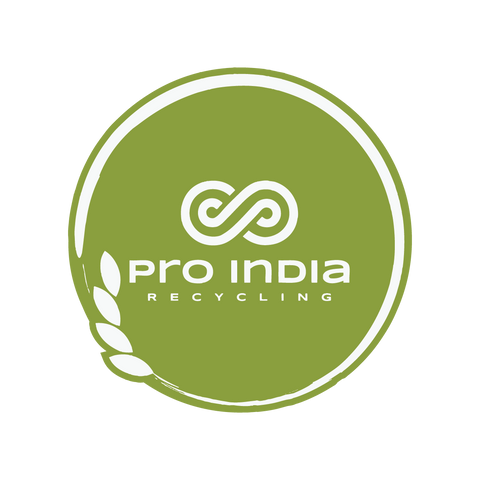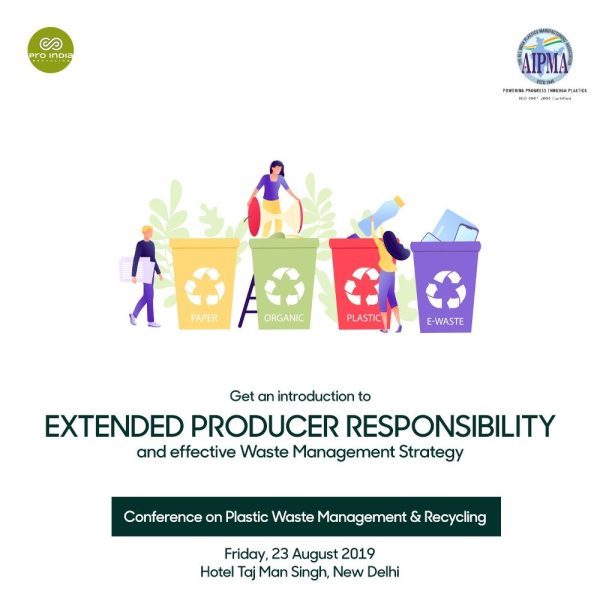Welcome, dear reader! Today, we are going to dive deep into the world of waste management and explore the role of business waste audits. Waste management is an essential aspect of running a sustainable and environmentally conscious business. In order to effectively manage and reduce waste, businesses need to understand the quantity and types of waste they generate. This is where waste audits come into play.
Waste audits are a crucial tool that allows businesses to assess their waste generation, identify areas for improvement, and implement effective waste reduction strategies. By conducting a waste audit, businesses can not only reduce their environmental impact but also achieve legal compliance and even save costs. Let’s explore the world of waste audits in more detail and learn how they can help businesses make a positive impact on the environment and their bottom line.
Understanding Waste Audits
Waste audits play a crucial role in effective waste management for businesses. By conducting a waste audit, companies can gain valuable insights into their waste generation, identify areas for improvement, and implement strategies to reduce waste and environmental impact. In this section, we will explore the definition and purpose of waste audits, as well as the benefits and different types of waste audits.
Definition and Purpose
A waste audit is a systematic process of analyzing and quantifying the waste generated by a business. It involves collecting data, categorizing waste streams, and evaluating disposal methods. The main purpose of a waste audit is to identify opportunities for waste reduction, recycling, and overall improvement in waste management practices.
Benefits of Waste Audits
Waste audits offer several benefits to businesses, including:
- Cost savings: By identifying inefficient waste management practices and implementing effective strategies, businesses can save on waste disposal costs and optimize resource allocation.
- Environmental impact: Waste audits help companies understand the environmental impact of their operations and find ways to minimize waste generation and promote sustainability.
- Legal and regulatory compliance: Businesses are required to comply with waste management regulations. Conducting waste audits ensures that companies meet legal obligations and avoid penalties.
- Improved reputation: Implementing effective waste management practices can enhance a company’s reputation and image. Customers and stakeholders appreciate businesses that prioritize environmental responsibility.
Types of Waste Audits
There are different types of waste audits that businesses can undertake, depending on their specific needs and goals. Some common types include:
- Baseline waste audit: This type of audit involves a detailed analysis of the waste generated by a company over a specific period. It provides a comprehensive understanding of the current waste management practices.
- Area-specific waste audit: Companies can also focus on specific waste-generating areas, such as offices, production lines, or warehouses. This allows for targeted waste reduction strategies.
- Recycling audit: This type of audit focuses on assessing the effectiveness of recycling programs within a business. It helps identify opportunities to increase recycling rates and reduce waste sent to landfills.
- Compliance audit: Compliance audits ensure that businesses are adhering to applicable waste management regulations and standards. They help identify areas of non-compliance and establish corrective actions.
By conducting these audits, businesses can gain valuable insights into their waste generation patterns and make data-driven decisions to improve waste management practices. Waste audits allow companies to take a proactive approach, reduce waste, save costs, and contribute to a more sustainable future.
The Importance of Waste Management
Waste management is a crucial aspect of running a business, as it not only has a significant impact on the environment but also on your bottom line. Implementing proper waste management practices can help minimize environmental pollution, ensure legal and regulatory compliance, and even save you money in the long run. In this section, we will explore the importance of waste management and why it should be a priority for businesses of all sizes.
Environmental Impact
- One of the main reasons why waste management is important is its impact on the environment. Improper waste disposal can lead to pollution of air, soil, and water, endangering local ecosystems and wildlife.
- By implementing effective waste management practices, such as recycling and composting, businesses can reduce the amount of waste sent to landfills, conserve natural resources, and lower carbon emissions.
- With growing concerns about climate change and the need to protect our planet for future generations, businesses have a responsibility to minimize their environmental footprint through proper waste management.
Legal and Regulatory Compliance
- Businesses are subject to various laws and regulations regarding waste management. Failure to comply with these regulations can result in hefty fines and damage to your reputation.
- It is important to stay informed about relevant waste management regulations in your industry and ensure that your business is in full compliance. This may involve obtaining permits, properly labeling hazardous waste, and disposing of waste through approved channels.
- By adhering to legal and regulatory requirements, businesses can demonstrate their commitment to responsible waste management and build trust with customers, stakeholders, and regulatory authorities.
Cost Savings
- While implementing waste management practices may require an initial investment, it can lead to significant cost savings in the long term.
- By reducing waste generation and implementing recycling programs, businesses can lower waste disposal costs. Many waste management companies offer recycling services at a lower cost than traditional waste disposal methods.
- Additionally, adopting sustainable practices, such as energy recovery from waste or repurposing waste for other purposes, can generate cost savings and even create new revenue streams.
- Furthermore, efficient waste management practices can improve overall operational efficiency, reduce the risk of workplace accidents, and enhance employee productivity.
In conclusion, waste management is not just a matter of environmental responsibility but also a strategic business decision. By implementing effective waste management practices, businesses can minimize their environmental impact, ensure legal compliance, and achieve significant cost savings. It is essential for businesses to prioritize waste management and develop comprehensive waste management plans to optimize their operations and contribute to a sustainable future.
Key Steps in Conducting a Waste Audit
Conducting a waste audit is an essential step in managing business waste effectively. It allows you to gain valuable insights into your waste generation, identify areas for improvement, and implement waste reduction strategies. Here are the key steps involved in conducting a waste audit:
Planning and Preparation:
Before diving into the waste audit process, it’s crucial to plan and prepare to ensure its success. Here are some important considerations:
- Define objectives: Clearly define the goals and objectives of the waste audit. This will help focus your efforts and determine what specific areas to assess.
- Form a team: Assemble a team of individuals who will be responsible for conducting the waste audit. This may include representatives from various departments, such as sustainability, operations, and procurement.
- Establish a timeline: Set a timeline for the waste audit process, including deadlines for data collection, analysis, and implementation of improvements.
- Allocate resources: Ensure that you have the necessary resources, such as tools, equipment, and personnel, to effectively carry out the waste audit.
- Develop a data collection plan: Determine the data that needs to be collected during the audit. This may include waste streams, quantities, sources, and disposal methods.
Data Collection and Analysis:
The next step is to collect and analyze data about your waste generation. This information will help you understand the current state of your waste management practices and identify areas where improvements can be made. Here’s how to go about it:
- Gather waste data: Collect data on the different types of waste generated by your business, including solid waste, recyclables, and hazardous materials. This can be done through waste tracking systems, waste invoices, and interviews with employees.
- Quantify waste: Determine the quantities of waste generated by each waste stream. This can be measured in weight, volume, or units, depending on the type of waste.
- Identify sources: Identify the sources of waste generation within your business. This could be specific departments, processes, or materials.
- Analyze data: Once you have gathered all the necessary data, analyze it to identify patterns and trends. Look for areas where waste generation is high or where recycling rates are low.
Identifying Improvement Opportunities:
After analyzing the data, it’s time to identify improvement opportunities and prioritize actions that can reduce waste generation and improve waste management practices. Here’s how to approach this step:
- Identify waste reduction strategies: Based on the data analysis, determine which waste reduction strategies are most feasible and effective for your business. This could include source reduction, recycling and composting, energy recovery, and donation or reuse initiatives.
- Set targets: Establish specific targets and goals for waste reduction. This could be a percentage reduction in waste generation, an increase in recycling rates, or the implementation of specific waste management practices.
- Prioritize actions: Prioritize the actions based on their potential impact and feasibility. Consider the cost-effectiveness, resources required, and potential environmental benefits of each action.
- Develop an action plan: Create a detailed action plan that outlines the steps, responsibilities, and timelines for implementing the identified improvement opportunities.
- Monitor progress: Regularly monitor and track the progress of the implemented actions to ensure they are effective and meeting the set targets.
Conducting a waste audit is a crucial step in improving waste management practices and reducing the environmental impact of your business. By following these key steps, you can gain valuable insights into your waste generation, identify areas for improvement, and implement effective waste reduction strategies. Remember, waste reduction is a continuous process, so it’s important to regularly evaluate and update your waste management practices to achieve long-term sustainability.
Implementing Waste Reduction Strategies
Reducing waste is not only good for the environment, but it can also contribute to cost savings and improve the overall efficiency of your business operations. Implementing waste reduction strategies is a crucial step in waste management, and there are several approaches you can take to make a positive impact. Let’s explore some effective strategies that can help you minimize waste in your business:
Source Reduction
Source reduction involves finding ways to reduce the amount of waste generated at the very beginning. By focusing on prevention rather than treatment or disposal, you can save both money and resources. Here are some source reduction strategies you can implement:
- Product Redesign: Redesigning your products or packaging to use less material or to be more easily recyclable can significantly reduce waste.
- Inventory Management: Implementing efficient inventory management practices can help you avoid overstocking and minimize product spoilage or obsolescence.
- Supplier Collaboration: Working closely with your suppliers to reduce packaging or adopt sustainable practices can lead to waste reduction throughout the supply chain.
Recycling and Composting
Recycling and composting are two effective waste reduction strategies that divert materials from the landfill and give them a second life. Here’s how you can incorporate recycling and composting into your waste management plan:
- Implement a Recycling Program: Set up designated recycling bins for common recyclable materials such as paper, cardboard, plastic bottles, and aluminum cans. Educate your employees on what can and cannot be recycled.
- Composting: If your business generates organic waste, such as food scraps or yard trimmings, consider implementing a composting program. Composting can reduce greenhouse gas emissions and produce nutrient-rich soil.
Energy Recovery
Energy recovery is a waste management strategy that involves converting waste into usable energy. Here’s how you can harness the power of your waste:
- Waste-to-Energy Conversion: Explore options for converting waste materials, such as biomass, to produce energy. Technologies like anaerobic digestion and incineration can generate heat or electricity while reducing the volume of waste.
Donations and Reuse
Donation and reuse programs can be a win-win situation for your business and the community. Instead of sending items to the landfill, consider the following options:
- Donate Surplus Materials: If your business has excess inventory or equipment, consider donating it to local charities, schools, or organizations in need. This not only reduces waste but also helps those in need.
- Implement a Reuse Program: Encourage employees to reuse office supplies, such as paperclips, folders, or files. Provide reusable water bottles or coffee mugs to reduce single-use plastic waste.
Implementing these waste reduction strategies requires commitment and active participation from your employees and stakeholders. By embracing a sustainable mindset and incorporating these strategies into your everyday operations, you can make a significant impact on waste management while also benefiting your bottom line.
“Waste is only waste if we waste it.” – Will.I.Am
Tracking and Monitoring Waste Management Progress
Tracking and monitoring waste management progress is a crucial aspect of effective waste management. It allows businesses to assess their performance, identify areas for improvement, and track their progress towards waste reduction goals. By regularly tracking and monitoring waste management efforts, businesses can make informed decisions and continuously strive for improvement.
Setting Goals and Targets
One of the first steps in tracking and monitoring waste management progress is setting clear and measurable goals and targets. These goals will serve as a benchmark for evaluating performance and determining the success of waste management initiatives. Goals should be specific, achievable, and time-bound, allowing businesses to track their progress over a set period.
Regular Reporting and Analysis
Regular reporting and analysis are essential in keeping track of waste management progress. By regularly reviewing and analyzing waste data, businesses can identify trends, patterns, and areas of concern. This data can help in identifying waste reduction opportunities and assessing the effectiveness of implemented strategies. It is important to establish a reporting schedule and ensure that data is collected consistently and accurately.
Continuous Improvement
Tracking and monitoring waste management progress is not just about measuring performance; it is also about seeking continuous improvement. Businesses should use the data collected to identify areas where further waste reduction can be achieved. This may involve revisiting waste reduction strategies, exploring new technologies, or implementing employee training programs. Constantly striving for improvement will ensure that waste management efforts remain effective and sustainable.
Benefits of Tracking and Monitoring Waste Management Progress
- Identify inefficiencies: Regular tracking and monitoring allow businesses to identify inefficiencies in waste management processes, such as excessive waste generation or poor recycling practices. This information can then be used to implement targeted improvement strategies.
- Measure ROI: By tracking waste management progress, businesses can determine the return on investment (ROI) of their waste reduction initiatives. This helps in evaluating the effectiveness of different strategies and prioritizing resources accordingly.
- Demonstrate commitment: Tracking and monitoring waste management progress allows businesses to demonstrate their commitment to sustainability and environmental stewardship. This can enhance their reputation and attract eco-conscious customers and partners.
- Compliance with regulations: Waste management regulations are becoming increasingly stringent. By tracking and monitoring their waste management efforts, businesses can ensure compliance with relevant laws and regulations, avoiding fines and penalties.
“Tracking and monitoring waste management progress is essential for businesses to evaluate their performance, identify areas for improvement, and continuously strive for waste reduction. By setting clear goals, regularly reporting and analyzing data, and seeking continuous improvement, businesses can make informed decisions and drive positive change.”
Engaging Employees and Stakeholders
Engaging employees and stakeholders is a crucial aspect of effective waste management in any business. By getting everyone on board and actively participating in waste reduction efforts, you can create a culture of sustainability and achieve greater success in your waste management goals. Here are some strategies to engage employees and stakeholders in your waste management initiatives:
1. Employee Training and Awareness
One of the first steps in engaging employees is to provide them with the necessary training and raise awareness about waste management practices. This can be done through informative workshops, training sessions, and educational materials. Some key areas to focus on include:
- Sorting and Segregation – Teach employees how to properly sort and separate different types of waste, such as recyclables, organic waste, and non-recyclable waste. Provide clear guidelines and labeling systems to make it easier for everyone to participate.
- Reducing Waste Generation – Educate employees on the importance of waste reduction and provide them with practical tips on how to minimize waste in their day-to-day activities. Encourage them to adopt habits like using reusable containers, printing less, and avoiding single-use items.
- Importance of Recycling – Highlight the benefits of recycling and explain which materials can be recycled. Make sure employees know where to find recycling bins and what items belong in each bin. Consider organizing recycling drives or competitions to make recycling more engaging.
2. Partnerships and Collaborations
Engaging stakeholders beyond your organization, such as suppliers, customers, and local community groups, can greatly enhance your waste management efforts. Collaborating with these stakeholders can bring fresh perspectives, resources, and opportunities for improvement. Here are a few ways to engage stakeholders:
- Supplier Collaboration – Work with your suppliers to find ways to reduce packaging waste or explore alternative packaging materials. Encourage them to adopt sustainable practices and look for suppliers who prioritize environmental stewardship.
- Customer Education – Engage your customers by providing them with information on your waste reduction efforts and encouraging them to participate. Consider offering incentives to customers who bring their own bags or containers or support businesses with sustainable practices.
- Community Partnerships – Collaborate with local community groups, recycling centers, or waste management agencies to support community-wide waste reduction initiatives. This can include organizing clean-up events, participating in recycling programs, or sharing resources and best practices.
3. Incentives and Recognition
Motivating and recognizing employees and stakeholders for their efforts in waste reduction can go a long way in fostering a sustainable mindset and encouraging active participation. Consider implementing the following incentives:
- Recognition Programs – Establish recognition programs to acknowledge employees or teams who consistently demonstrate a commitment to waste reduction. This can include certificates, public recognition, or rewards.
- Incentive Programs – Implement incentive programs that reward employees for achieving waste reduction targets or coming up with innovative ideas. Consider offering financial incentives, extra time off, or other desirable rewards.
- Internal Communication – Regularly communicate progress, success stories, and updates on waste reduction initiatives. This helps keep everyone informed and engaged, while also creating a sense of collective responsibility and achievement.
Engaging employees and stakeholders in waste management initiatives is not only good for the environment but also for your business. By involving everyone in the process, you can tap into a wealth of knowledge, ideas, and resources that will propel your waste reduction efforts forward. Together, you can make a positive impact and create a sustainable future for your business and the community.
Developing a Comprehensive Waste Management Plan
When it comes to waste management, having a comprehensive plan in place is key to effectively managing and reducing waste in your business. A waste management plan is a roadmap that outlines the steps and strategies you will take to minimize waste generation, improve recycling and composting efforts, and ensure legal and regulatory compliance. Here are some important considerations for developing a comprehensive waste management plan:
Setting Objectives and Targets
Setting clear objectives and targets is an essential first step in developing a waste management plan. These goals should be specific, measurable, achievable, relevant, and time-bound (SMART). Examples of objectives could be reducing waste generation by a certain percentage, increasing recycling rates, or implementing a composting program. Make sure these objectives align with your business’ values and sustainability goals.
Allocating Resources
To successfully implement your waste management plan, it’s important to allocate the necessary resources. This includes assigning responsibilities to specific individuals or teams, providing them with the necessary training and tools, and budgeting for waste management initiatives. Consider investing in waste reduction technologies, such as waste sorting equipment or composting systems, if they align with your waste management goals.
Ensuring Compliance
Compliance with waste management regulations is crucial to avoid penalties and legal issues. Stay up-to-date with local, regional, and national regulations regarding waste disposal, recycling, hazardous waste, and other relevant areas. Include a section in your waste management plan that outlines the specific regulations your business needs to adhere to and the steps you will take to ensure compliance.
Developing a comprehensive waste management plan requires careful planning, collaboration, and ongoing monitoring. It’s important to regularly revisit and update your plan as your business evolves and new waste management technologies and strategies emerge. By implementing a well-thought-out waste management plan, you’ll not only reduce waste and minimize your environmental impact, but also create a more sustainable and efficient operation.
“A comprehensive waste management plan is like a compass that guides your business towards cleaner, greener, and more sustainable practices.”
Conclusion
In conclusion, conducting a waste audit is a crucial step in effective waste management for businesses. It provides valuable insights into waste generation, allows for identification of improvement opportunities, and helps in developing strategies for waste reduction. By implementing waste reduction strategies such as source reduction, recycling, composting, energy recovery, and donations/reuse, businesses can significantly reduce their environmental impact, achieve legal and regulatory compliance, and save costs.
Tracking and monitoring waste management progress through goal setting, regular reporting and analysis, and continuous improvement ensures that businesses stay on track and make progress towards their waste management objectives. Engaging employees and stakeholders through training, partnerships, and incentives builds a culture of waste reduction and sustainability within the organization.
Lastly, developing a comprehensive waste management plan with clear objectives, resource allocation, and compliance measures ensures that waste management efforts are integrated and consistent across the organization. By following these steps and incorporating waste audits into their waste management strategy, businesses can make a significant impact in reducing waste and contributing to a more sustainable future.
Frequently Asked Questions
- What is a business waste audit?A business waste audit is a systematic assessment of a company’s waste generation, management practices, and disposal methods. It helps identify areas where waste can be minimized, recycled, or otherwise managed more efficiently.
- Why is a waste audit important for businesses?A waste audit is important for businesses as it helps them understand their waste generation patterns, identifies opportunities for waste reduction and recycling, and can potentially lead to cost savings through better waste management practices.
- How is a waste audit conducted?A waste audit typically involves the collection, sorting, and analysis of a representative sample of a company’s waste. This can be done by physically sorting the waste materials or by using specialized waste auditing software and tools.
- What are the benefits of conducting a waste audit?Conducting a waste audit provides several benefits such as identifying cost-saving opportunities, improving resource efficiency, reducing environmental impact, enhancing corporate sustainability efforts, and complying with waste management regulations.
- Who should conduct a waste audit for businesses?A waste audit for businesses can be conducted by waste management professionals, environmental consultants, or specialized waste auditing companies. Alternatively, businesses can also develop their in-house waste auditing capabilities.



